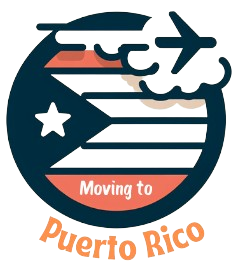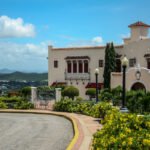When it comes to getting a mortgage in Puerto Rico, it’s essential to understand the types of mortgages available, the requirements for obtaining one, and important tips for navigating the process successfully.
This section will provide valuable insights into securing a home loan in Puerto Rico.
Types of mortgages available
Getting a mortgage in Puerto Rico might seem hard, but many options are available. Here are the main types of home loans you can find on the island.
- Fixed-rate mortgages: Your payments stay the same because the interest rate doesn’t change. This is good if you want to know exactly what you’ll pay every month.
- Adjustable-rate mortgages (ARMs): These start with a lower rate that may go up or down over time. ARMs are risky but can save you money if rates stay low.
- Government-backed loans: Loans like FHA, VA, or USDA are also in Puerto Rico. They often need smaller down payments and are easier to get.
- Construction loans: If you’re building your house, this loan helps pay for the construction before it turns into a regular mortgage.
- Home equity loans: Already own a home? You can borrow money against its value to fix it up or pay for other big costs.
- Reverse mortgages: For older homeowners, these let you get money from your home’s value without selling it. The rules are the same as in all 50 U.S. states.
Requirements for obtaining a mortgage
Getting a mortgage in Puerto Rico means meeting certain needs. Here is what you have to do:
- Find a local licensed lender: You’ll need one to finance your home purchase in Puerto Rico.
- Get pre-qualified for a loan: This shows sellers you can buy their home.
- Complete mortgage education: Every year, you must finish 8 hours if you’re a state-licensed MLO in Puerto Rico.
- Show proof of income: Lenders want to see that you make enough money to pay back the loan.
- Have a good credit score: A higher score helps get better loan terms.
- Save for a down payment: The more money you put down, the less you borrow.
- Prepare important documents: Collect tax returns, bank statements, and other papers the lender asks for.
- Choose the right mortgage type: Decide if you want a fixed rate or an adjustable rate.
Tips for getting a mortgage in Puerto Rico
Check your credit score and save up for a down payment before you talk to lenders. A good credit score can help you get a better loan deal. Also, having money for a down payment shows lenders that you are serious.
Talk to different mortgage lenders in Puerto Rico to compare rates. Interest rates may be higher here than in other places.
Ask lots of questions about the mortgage process. Make sure you understand all the steps and what documents you need. Find a lender who knows about many kinds of home loans in Puerto Rico; they can offer more options that fit your needs.
Remember, buying property here is possible with lending available so not all funding has to come from personal finances.
Choose someone who will guide you well through getting a PR mortgage without extra rules or limits (also known as overlays). They should be able to connect with multiple wholesale lenders, which might give you the best chance at finding great terms for your loan.
Top Lenders for Home Mortgages in Puerto Rico

When it comes to securing a mortgage in Puerto Rico, it’s essential to choose the right lender. The top lenders for home mortgages in Puerto Rico include Banco Popular de Puerto Rico, First Mortgage, and Scotiabank.
Comparing interest rates will help you find the best option for your financial needs.
Banco Popular de Puerto Rico
Banco Popular de Puerto Rico is a leading lender for home mortgages in Puerto Rico, offering a variety of mortgage loans tailored to meet the needs of borrowers. Through its division, Popular Mortgage, Banco Popular provides options subject to credit approval and guides borrowers on services available to originate and close a mortgage loan with them.
With flexible benefits and different features, Banco Popular de Puerto Rico ensures that individuals looking to purchase homes in Puerto Rico have access to suitable mortgage solutions.
Furthermore, Banco Popular de Puerto Rico can assist U.S. citizens seeking mortgages in Puerto Rico by offering guidance on requirements and processes for securing a loan as well as enabling them with necessary information about their various mortgage loan options.
First Mortgage
First Mortgage is among the top mortgage lenders in Puerto Rico. They provide a variety of mortgage loan options for individuals seeking to buy or refinance a home on the island. For those relocating from the United States, First Mortgage offers a feasible choice for obtaining a home loan and making their move to Puerto Rico smoother.
Moving on to “Top Lenders for Home Mortgages in Puerto Rico,” let’s explore Banco Popular de Puerto Rico as another leading option.
Scotiabank
Scotiabank is among the top lenders for home mortgages in Puerto Rico. They offer various mortgage programs, including government loans and conventional mortgages to suit different needs.
Although their online reputation is mixed, Scotiabank provides a mortgage calculator on their website to help determine monthly payments and explore options to save more on mortgages.
With numerous locations throughout Puerto Rico, they also offer a range of loan options for those looking to buy a home.
Comparison of interest rates
Given the competition among financial institutions, comparing interest rates is a crucial step in securing a mortgage. In Puerto Rico, the average mortgage rates from various lenders offer a snapshot of what potential homeowners might expect when financing their home purchase.
| Lender | Interest Rate |
|---|---|
| Banco Popular de Puerto Rico | 7.25% |
| First Mortgage | 7.50% |
| Scotiabank | 7.45% |
The table above presents a comparative view, yet these figures are subject to change based on market conditions and individual circumstances. It’s essential for homebuyers to scrutinize these numbers closely, especially when settling on the right mortgage lender for their needs in Puerto Rico.
Considerations for Purchasing a Home in Puerto Rico
When considering purchasing a home in Puerto Rico, it’s important to understand the costs and property values, as well as explore options for foreclosed properties. Additionally, it’s essential to be aware of the benefits that come with owning a home in Puerto Rico.
Costs and property values
Understanding the financial implications of a home purchase in Puerto Rico is crucial for individuals looking to relocate from the United States. This comprehensive insight into costs and property values assists in making informed decisions.
| Cost Component | Description | Estimated Range or Average |
|---|---|---|
| Property Values | Average price of homes in various regions of Puerto Rico | Varies widely based on location and property type |
| Commission Rates | Percentage of sale price paid to real estate agents | 2-4%, higher for luxury properties |
| Down Payment | Initial payment made when buying a property | Typically 20% of the purchase price |
| Closing Costs | Fees associated with finalizing a real estate transaction | 2-5% of the purchase price |
| Property Taxes | Annual taxes based on property value | Varies by municipality |
| Home Insurance | Insurance coverage for the property | Depends on property value and coverage options |
| Maintenance Costs | Regular expenses for upkeep of the property | Varies with property condition and size |
Prospective buyers should engage in thorough research and consult with real estate professionals to grasp the nuances of the Puerto Rican housing market. This ensures a realistic budget is set for their new home purchase while considering the potential investment value.
Foreclosed properties
When it comes to the Puerto Rican real estate market, potential buyers should be aware of foreclosed properties. The market has numerous foreclosures and bank-owned homes, even in desirable neighborhoods.
It’s important for those relocating to understand that purchasing a foreclosed property can present challenges and require thorough due diligence.
Navigating the Puerto Rican real estate market may involve encountering weedy foreclosures and se vende signs everywhere. With this in mind, individuals considering relocation should carefully evaluate the benefits and pitfalls associated with purchasing foreclosed properties before making any decisions.
Benefits of purchasing a home in Puerto Rico
Living in Puerto Rico offers various benefits for homebuyers. The island provides an affordable cost of living and housing options, making it an attractive destination for those seeking a more budget-friendly lifestyle.
Additionally, buyers can immerse themselves in the vibrant culture and enjoy the unique experiences that come with living in Puerto Rico. With its beautiful landscapes and rich history, purchasing a home in Puerto Rico opens doors to a fulfilling and enriching life.
Puerto Rico also presents an array of tax incentives for new residents, providing further financial benefits to homeowners. Moreover, the tropical climate and access to stunning beaches make everyday life feel like a vacation.
How to Get a Mortgage in Puerto Rico with U. S. Loans
Looking to obtain a mortgage in Puerto Rico with U.S. loans? This section will provide you with the necessary steps, requirements for U.S. citizens, and the benefits of using a U.S. lender for your home purchase in Puerto Rico.
Steps to take
To get a mortgage in Puerto Rico as a U.S. citizen, follow these steps:
- Research and Identify Lenders: Look for local licensed lenders in Puerto Rico who offer mortgages to non-residents.
- Understand Requirements: Familiarize yourself with the documentation and financial requirements needed by Puerto Rican lenders for non-resident homebuyers.
- Get Pre-Approved: Find a local lender and begin the pre-approval process to establish your budget and show sellers you are a serious buyer.
- Obtain Pre-Qualification Letter: Secure a pre-qualification letter from a local financial institution to streamline the loan application process.
- Hire Real Estate Professional: Engage the services of a real estate professional who has experience in working with non-resident buyers in Puerto Rico.
- Budget for Additional Costs: Consider other expenses such as closing costs, property taxes, and insurance when determining your budget for purchasing a home in Puerto Rico.
- Visit Properties and Make Offers: Once pre-approved, start visiting properties that meet your criteria and make offers through your real estate agent.
- Finalize Mortgage Application: Work closely with your chosen lender to complete the mortgage application process efficiently while adhering to all requirements.
- Double-Check Legalities: Verify legal processes involved in purchasing property in Puerto Rico to ensure compliance with local laws and regulations.
Requirements for U.S. citizens
To get a mortgage in Puerto Rico, U.S. citizens need to fulfill specific criteria. Here are the requirements:
- Proof of U.S. citizenship or legal residency status.
- A valid social security number for all applicants named on the mortgage application.
- Demonstrable stable income and employment history, typically spanning at least two years.
- Good credit score, usually above 620, but potentially higher for certain loan types.
- Verification of assets such as bank statements and investment account records to demonstrate financial stability.
Benefits of using a U.S. lender
U.S. lenders associated with Puerto Rico offer various loan options, such as Fannie Mae Loans, FHA, VA Loans, and Rural Development Loans. Relocating to Puerto Rico individuals can find U.S. lenders to finance their home purchase or refinancing needs.
Few lenders in the U.S. are licensed in Puerto Rico, making it beneficial to find a U.S. lender associated with the territory.
By choosing a U.S. lender for getting a mortgage in Puerto Rico, individuals may gain access to more diverse loan options that cater specifically to their needs as well as enjoy the convenience of working with an established institution that understands both U.S. regulations and local requirements for financing property purchases in Puerto Rico.
Conclusion
In conclusion, getting a mortgage in Puerto Rico involves understanding the process and choosing the right lender. Prospective homebuyers should consider the types of mortgages available and meet the requirements for obtaining a loan.
It’s essential to research top lenders like Banco Popular de Puerto Rico, First Mortgage, and Scotiabank to compare interest rates. Buyers can also explore U.S. loans for purchasing property in Puerto Rico and consult with lenders experienced in this area to navigate the process effectively.
By considering these tips and exploring reputable lenders, individuals can make informed decisions when seeking a mortgage in Puerto Rico.
FAQs
1. What are the best home loans in Puerto Rico?
The best home loans in Puerto Rico come from lenders who offer good rates and terms that fit your budget and needs.
2. How do I find a good mortgage lender in Puerto Rico?
You can find a good mortgage lender by looking at different rates, reading reviews, and asking people who have bought homes for advice.
3. What tips should I follow to get a mortgage in Puerto Rico?
To get a mortgage, check your credit score, plan your budget carefully, compare different lenders’ offers, and understand all the loan terms before you agree.
4. Will the interest rates be high for mortgages in Puerto Rico?
Interest rates can change based on many things like how much money you put down or your credit history; always compare offers to find the best rate for you.

Pablo Sierra is the writer and creator of the blog Moving to Puerto Rico, where he assists others in relocating to the island by providing advice and sharing his first-hand experiences.
Originally from Arecibo, Puerto Rico, Pablo has spent most of his life living on the island. His passion for the vibrant Puerto Rican lifestyle and helping newcomers adjust inspired him to start Moving to Puerto Rico. On the blog, Pablo taps into his insider-knowledge as a native to offer tips on the best neighborhoods, navigating the local culture, finding the top beaches and trails, and more.
To learn more about Pablo and connect with him on all things related to moving to and living in Puerto Rico, check out his website, www.movingtopuertorico.net.








